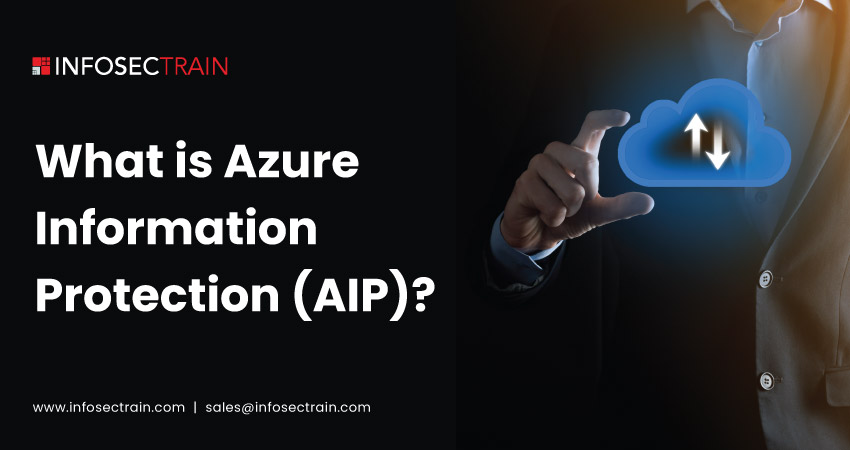What is Azure Information Protection (AIP)?
What is Azure Information Protection (AIP)?
Azure Information Protection (AIP) is a cloud-based service by Microsoft designed to safeguard sensitive data through classification, labeling, and protection. It integrates seamlessly with Office 365, allowing easy management and security of emails, documents, and files. AIP offers features like encryption, rights management, and persistent protection to ensure data remains secure both within the organization and when shared externally. This solution enables businesses to control their data, adhere to regulatory requirements, and prevent breaches. By using AIP, organizations can enhance their security posture while efficiently preserving data integrity and confidentiality.

What are the features of AIP?
1. Classification and Labeling: AIP enables users to categorize data according to its sensitivity and assign relevant labels. These labels determine access permissions, encryption needs, and usage guidelines, ensuring that data is managed in compliance with organizational and regulatory standards.
2. Compliance and Auditing: AIP aids organizations in fulfilling compliance mandates by offering comprehensive audit logs and reporting features. It facilitates the demonstration of adherence to regulations such as GDPR, HIPAA, and PCI DSS, which helps lower the likelihood of fines and penalties associated with data breaches.
3. Encryption and Rights Management: AIP utilizes encryption techniques to protect data, limiting access exclusively to authorized users. Additionally, it integrates rights management functionalities, allowing control over activities like viewing, editing, copying, forwarding, and even post-data-sharing.
4. Integration with Office 365: AIP integrates smoothly with Office 365 Integrations applications, enabling users to classify and safeguard emails, documents, and files directly from familiar interfaces. This integration streamlines the data security process, encouraging user adoption and facilitating compliance efforts.
5. Continuous Protection Across Platforms: AIP is unique in its ability to protect data regardless of location. Whether accessed from a corporate network, a mobile device, or a third-party application, AIP guarantees that sensitive information remains secure.
How does AIP Work?
1. Classification: Classification in AIP involves users categorizing data according to its sensitivity, such as public, internal, or confidential. This process dictates the level of protection and access controls applied to the data. It ensures that data is handled appropriately and by organizational policies and regulatory requirements, enhancing overall data security.
2. Labeling: Labeling in AIP involves attaching suitable labels to classified data and specifying access permissions, encryption needs, and usage guidelines. These labels ensure data is managed in compliance with organizational policies and regulatory standards, enhancing data security and governance.
3. Protection: Protection in AIP involves using encryption and rights management to secure data, limiting access to authorized users, and controlling their actions even after sharing. This guarantees the protection of sensitive information while ensuring compliance with organizational policies and regulations.
4. Monitoring: Monitoring in AIP enables organizations to track the access and usage of sensitive data, generating comprehensive audit logs for compliance purposes. This allows for the continuous assessment of data security practices and helps ensure adherence to regulatory requirements and organizational policies.
5. Response: In AIP, the Response phase enables organizations to react quickly to security incidents or policy breaches. By using AIP’s insights and controls, they can identify, assess, and mitigate risks, ensuring data security and compliance with regulatory requirements.
Best Practices for Implementing AIP
1. Establishing Data Classification Guidelines: Develop clear policies for categorizing data according to sensitivity, compliance obligations, and organizational objectives. Create a set of labeling criteria and provide comprehensive training to ensure users understand how to apply them appropriately.
2. Continuous Monitoring and Optimization: Track AIP utilization and effectiveness regularly while gathering user input to pinpoint areas needing enhancement. Adjust policies and settings in response to evolving threats and changing organizational needs for optimized performance.
3. Engaging Stakeholders: Collaborate with stakeholders from IT, legal, and compliance departments during AIP implementation. Their input is valuable for customizing AIP deployment to align with specific business goals and regulatory requirements.
4. Training and Promoting Awareness: Organize training sessions to acquaint users with AIP functionalities and educate them on handling sensitive data effectively. Cultivate a culture of security awareness to instill proactive data protection habits among employees.
AZ-500 Certification with InfosecTrain
Enrolling in the Microsoft AZ-500 Training course at InfosecTrain offers the opportunity to acquire in-depth expertise in Azure security core services and capabilities. With a curriculum aligned with certification standards, this training emphasizes the effective deployment of secure infrastructure solutions on the Microsoft Azure platform. By participating in the AZ-500 online training, you gain the required skills for the Microsoft AZ-500 Certification exam and enhance your proficiency in safeguarding Azure environments, preparing you for real-world challenges in cloud security.







 1800-843-7890 (India)
1800-843-7890 (India)